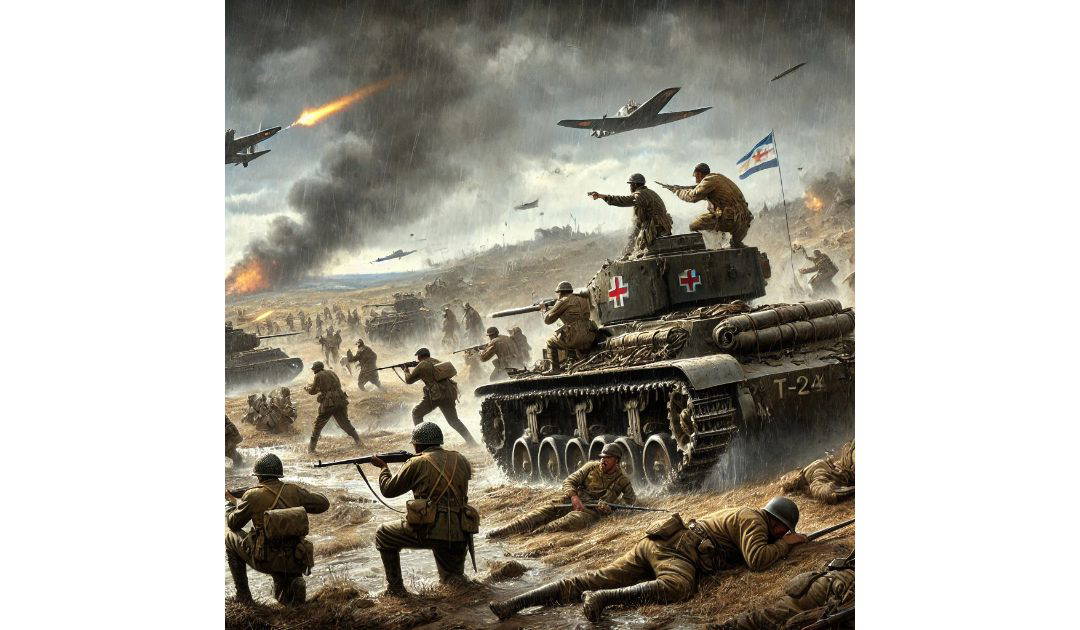On the 8th of March, 1937, the Battle of Guadalajara began. The Battle of Guadalajara was a key conflict during the Spanish Civil War (1936 – 1939), fought between the Republican forces and the Nationalists, supported by Italian troops. The battle, which took place from the 8th of March to the 23rd of March, 1937, near the city of Guadalajara, ended in a decisive Republican victory. It marked a turning point in the war, proving that Nationalist offensives could be repelled and highlighting the weaknesses of Italian intervention.
The Spanish Civil War began in July 1936 when right-wing Nationalists, led by General Francisco Franco, launched a coup against the leftist Republican government. The war quickly turned into an international conflict, with Germany and Italy supporting Franco, while the Soviet Union and international volunteers backed the Republicans.
By early 1937, the Nationalists had captured Málaga and sought to advance on Madrid, Spain’s capital. Their earlier attempt to seize Madrid in November 1936 had failed, leading to a prolonged siege. To break the stalemate, Franco launched a new offensive targeting Guadalajara, a strategically vital city just 50 km northeast of Madrid. The goal was to encircle Madrid from the north and cut off Republican supply lines.
The offensive was primarily entrusted to Italian forces, sent by Benito Mussolini to aid Franco. This force, known as the Corpo Truppe Volontarie (CTV), consisted of around 35,000 Italian troops, supported by tanks, artillery, and air power. They faced a smaller but determined Republican defense, made up of Spanish troops, international brigades, and Soviet-supplied equipment.
The battle began with the Italians launching a massive attack along the Guadalajara-Brihuega road. Their initial success was due to superior firepower, and they quickly advanced, capturing several villages. However, logistical problems and bad weather, heavy rain and mud, slowed their advance. The poor conditions disrupted tank movements and made it difficult for the Italians to maintain their momentum.
By the 12th of March, the Republican forces, reinforced by the 11th Division under Enrique Lister and the International Brigades, began launching counterattacks. Republican T-26 tanks, supplied by the Soviet Union, outperformed Italian light tanks.
At the same time, Republican air forces gained air superiority, using Soviet-supplied Polikarpov I-15 and I-16 fighters to attack Italian supply lines. The Italians, unprepared for a prolonged fight, suffered from poor coordination and a lack of reserves.
On the 18th of March the Republicans launched a final, massive counteroffensive, forcing the Italians into a chaotic retreat. By the 23rd of March the battle was over, with the Republicans reclaiming lost territory. The Italians suffered heavy casualties, losing around 6,000 men (killed, wounded, or captured), along with dozens of tanks and artillery pieces.
The Republican victory at Guadalajara was a major morale boost. It marked the first major defeat of Italian fascist troops in conventional warfare and damaged Mussolini’s reputation. Mussolini had sent troops to Spain expecting an easy victory. Instead, the defeat embarrassed Italy’s military, highlighting weaknesses in its tactics and leadership.
The Nationalists’ encirclement plan for Madrid failed, prolonging the war. Though Franco eventually won the war in 1939, Guadalajara showed that Republican forces could resist well-planned offensives. The victory at Guadalajara boosted Republican confidence and proved that foreign intervention alone would not guarantee success for the Nationalists. The battle exposed the ineffectiveness of Italian military strategy, including poor coordination between infantry, armour, and air forces. This weakness was later seen in Italy’s failures during World War II.
The Battle of Guadalajara was one of the most important engagements of the Spanish Civil War. While it did not decisively change the war’s outcome, it exposed the limitations of the Italian military and temporarily strengthened Republican resistance. The battle demonstrated the growing role of modern warfare tactics, including combined arms coordination and airpower, which would become crucial in World War II.

